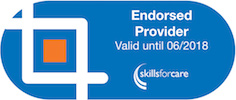Includes BLS, CPR , AED and Anaphylaxis


The purpose of the ProTrainings CPR/BLS, AED and Anaphylaxis Level 2 (VTQ) is to equip learners with the necessary skills, knowledge, and understanding to effectively administer Cardiopulmonary Resuscitation and safely manage an Automated External Defibrillator. This qualification empowers trained providers to deliver essential emergency first aid using an AED, guided by the BLS/AED algorithm and the responsibilities and principles governing AED use.
ProTrainings Basic Life Support courses have been thoughtfully designed to encompass all required learning outcomes and adhere to the Skills for Health UK Core Skills Training Framework (UK-CSTF). This coverage extends to both level 2 adult and peadiatric patient care. Furthermore, this course is endorsed by Skills for Care and aligns with the Resuscitation Council (UK) guidelines for adult and peadiatric cardiopulmonary resuscitation (CPR) and basic life support (BLS).
This comprehensive course encompasses Basic Life Support skills, spanning Adult, Child, and Infant care, and includes healthcare-specific variations for infant CPR. The curriculum includes aspects such as safety, precautions, initial assessment, recovery position, CPR, compression-only CPR, CPR handover, and handling choking situations. It is particularly suitable for nurses, care workers, or medical professionals seeking annual updates to maintain professional membership.
For many individuals, this course can be completed entirely online. However, if you require hands-on practice as well, we have a network of approved instructors who can offer blended courses, which include a brief practical session.
AED training is a crucial component of this course. Learning AED skills is increasingly important as more AED units are available in the community and workplace. They are user-friendly with minimal training and can significantly enhance the chances of survival for someone in cardiac arrest. If you have already completed other first aid courses, you'll appreciate the importance of promptly using an AED, making this an excellent follow-up course to further enhance your life-saving skills.
All of our first aid courses fully adhere to the latest UK and European Resuscitation Council Guidelines for, in compliance with HSE requirements. It's important to note that learners undertaking a ProTrainings Training Course have the option to choose a regulated qualification.
This anaphylaxis awareness module is designed for anyone who needs to understand anaphylaxis. It covers the use of Epi-Pens, Emerade, and Jext, along with recognising signs, treatment, concerns, and activating EMS, as well as patient care. We offer a 100% classroom-based course, and the certificate remains valid for three years. To renew it, simply complete the same course again. Upon successful completion of the online or classroom course, you will receive a ProTrainings wall certificate and wallet card.
Some of our online and classroom courses also include Anaphylaxis training, and in some cases, this course can be integrated into another course and dually certified by ProTrainings. This course is also tailored to healthcare professionals, aligning with their specific responsibilities.
All of our first aid courses are fully compliant with the latest UK and European Resuscitation Council Guidelines, including the guidelines for Anaphylaxis.
The content of this and all our courses has been independently certified as conforming to universally accepted Continuous Professional Development (CPD) guidelines and come with a Certified CPD Statement as well as a ProTrainings Certificate and for online courses an Evidence Based Learning statement.






